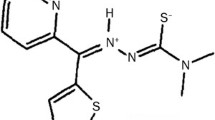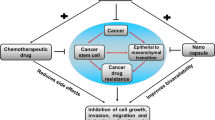Abstract
The antitumor effects of 6-O-(3-ethoxypropionyl)-3′,4′-O-exo-benzylidenechartreusin (IST-622), a new synthetic derivative of chartreusin (CT), were investigated. Following oral administration, IST-622 showed marked antitumor effects against various mouse tumors such as P388 and L 1210 leukemias, B 16 melanoma, Lewis lung carcinoma, Colon 26 and Colon 38 adenocarcinomas, and M5076 reticulum-cell sarcoma. The best antitumor effects were obtained by five intermittent treatments given every 4 days. In addition, IST-622 showed a significant growth-inhibitory effect against two human tumor xenografts, a large-cell lung cancer (Lu-116) and a gastric adenocarcinoma (St-4), among the seven lines tested. IST-622, which was rapidly metabolized into 3′,4′-O-exo-benzylidenechartreusin (A-132) and not into CT in vivo or in culture medium, exhibited remarkable growth-inhibitory activity against P388 leukemia in vitro, its 50% growth-inhibitory concentration (IC50) being over 20-fold lower than that of CT. IST-622 showed an in vivo antitumor effect superior to that of authentic A-132, possibly resulting from a higher absorption ratio of IST-622 through the gastrointestinal tract. IST-622 is now under clinical phase I study in Japan.
Similar content being viewed by others
References
Kon K, Sugi H, Tamai K, Ueda Y, Yamada N (1990) Synthesis and cytostatic activity of the antitumor antibiotic chartreusin derivatives. J Antibiot (Tokyo) 43: 372
McGovren JP, Neil GL, Campton SL, Robinson MI, Douros JD (1977) Antitumor activity and preliminary drug disposition studies on chartreusin (NSC 5159). Cancer Res 37: 1666
Raber MN, Newman RA, Newman BM, Gaver RC, Schacter LP (1992) Phase I trial and clinical pharmacology of elsamitrucin. Cancer Res 52: 1406
Schurig JE, Bradner WT, Basler GA, Rose WC (1989) Experimental antitumor activity of BMY-28090, a new antitumor antibiotic. Invest New Drugs 7: 173
Tashiro T, Inaba M, Kobayashi T, Sakurai Y, Maruo K, Ohnishi Y, Ueyama Y, Nomura T (1989) Responsiveness of human lung cancer/nude mouse to antitumor agents in a model using clinically equivalent doses. Cancer Chemother Pharmacol 24: 187
Author information
Authors and Affiliations
Rights and permissions
About this article
Cite this article
Tashiro, T., Kon, K., Yamamoto, M. et al. Antitumor effects of IST-622, a novel synthetic derivative of chartreusin, against murine and human tumor lines following oral administration. Cancer Chemother. Pharmacol. 34, 287–292 (1994). https://doi.org/10.1007/BF00686034
Received:
Accepted:
Issue Date:
DOI: https://doi.org/10.1007/BF00686034




